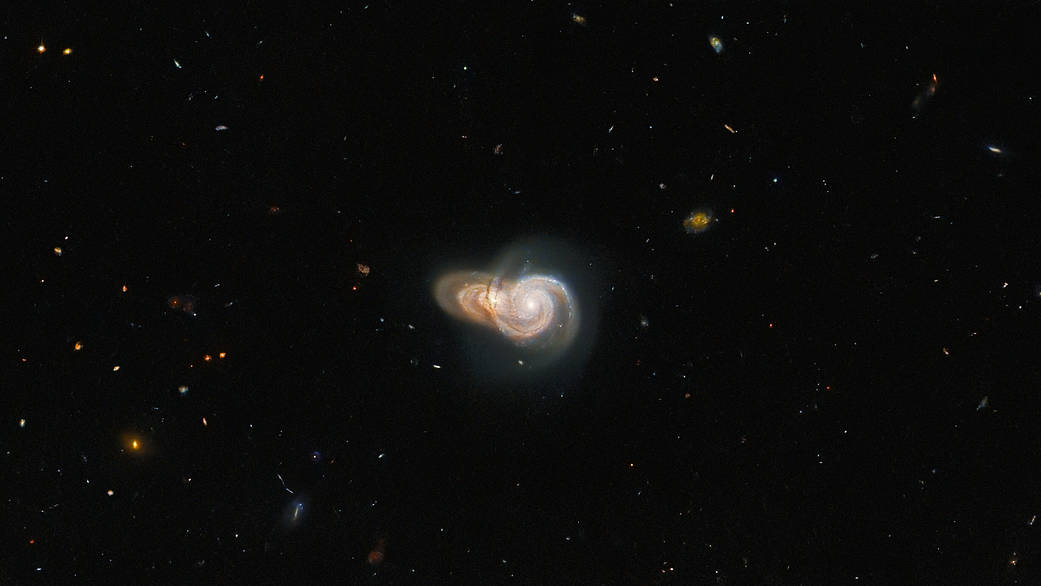This image, taken by the Hubble Space Telescope, appears to show two spiral galaxies colliding. In fact, they are just overlapping from our vantage point and are likely quite distant from each other. The galaxies are named SDSS J115331 and LEDA 2073461, and they lie more than a billion light-years from Earth. This ‘photobombing’ of one galaxy getting in the same picture as another was originally found by volunteers from the Galaxy Zoo project, which uses the power of crowdsourcing to find unusual galaxies in our Universe.
The Galaxy Zoo project, which has been around since 2007 and spawned a whole “Zooniverse” of various projects, has made some unusual findings over the years and the teams have published scientific papers (here’s the list of publications from all the Zooniverse projects). The volunteers classify galaxies imaged by robotic telescopes and these community scientists are often the first to ever set eyes on an astronomical object. Their work has gained such a fine reputation that Galaxy Zoo has now been allotted observational time on Hubble.

According to project scientist William Keel, in late 2017 the Space Telescope Science Institute (STScI), which operates Hubble (and JWST) put out a call for potential “gap-filler” projects, where there were gaps in Hubble’s observing schedule that were long enough to set up and take 10-15 minutes’ worth of high-quality data.
“We had long thought that the ideal proposal for further observations of some of the rare objects identified in Galaxy Zoo ran along the lines of ‘Our volunteers have found all these weird galaxies. We need a closer look,’” Keel wrote on the Galaxy Zoo blog. “That was essentially what the gap-filler project offered.”
Keel said they estimated they could identify 1,100 particularly interesting galaxies, where they thought short-exposure Hubble images would be beneficial for getting more information about the objects. While Galaxy Zoo’s proposal for observing time was accepted by STScI, they were ‘only’ allocated 300 observing slots.
This image of the photobombing galaxies is one of those observations, which the Galaxy Zoo team have nicknamed Zoo Gems. Keel estimates volunteers have probably found over 2,000 of these overlapping galaxies over the years.
“A key feature of our project was the wide range of galaxy science goals it could address, so we wanted to keep a broad mix of object types,” wrote Keel. “Some types were rare and had fewer than 10 examples even from Galaxy Zoo, so we started by keeping those. When there were many to choose from, we did what Galaxy Zoo history (and STScI reviewers) suggested – asked for people to vote on which merging galaxies, overlapping galaxies, and so on should go into the final list.”
Look for more Zoo Gems from the Hubble Space Telescope by following the hashtag #ZooGems on social media.

